- We put all five full-size trucks on sale through a huge comparison test.
- Some of these pickups were updated more recently than others, and it shows.
- Each of the trucks has different strengths and weaknesses. We'll detail them all before you buy.
Best Full-Size Truck of 2025: F-150, Silverado, Ram, Tundra and Sierra Ranked
We pick our favorite truck and tell you why
Our latest comparison test ranks every full-size truck from best to worst, based on our rigorous Edmunds rating system. We put these trucks through the ringer, testing everything from their interior quality and technology to their driving dynamics and everyday usability.
The Ford F-150, Chevrolet Silverado, Toyota Tundra, Ram 1500 and GMC Sierra all have their strengths, but one stands out above the rest, providing just about everything you could want in a truck.
5th place: Chevy Silverado
Edmunds Rating: 7.5/10
The good: Fantastic tech
The bad: Comfort (or lack of it)
The Silverado's last full redesign was in 2019, with a refresh following in 2022. Even so, it has the largest standard touchscreen, at 13.4 inches, of any of the trucks in this group (along with the closely related GMC Sierra). We love what's powering the screen, with Google integration that lets you use Google Maps as the default navigation app and the Google voice assistant to answer natural speech commands.
This means if you log in to your Google account, you can get all of your places, contacts and preferences loaded right into the truck, and you can even download apps like Spotify or Audible from the Google Play Store. On top of that, higher trim levels also offer Super Cruise — our favorite hands-free highway driving system on sale today.
There is a downside, though: subscriptions. After a three-month trial period, you'll have to pony up for a data plan to power that Google stuff. And if you have Super Cruise, that'll require a subscription as well. At least Apple CarPlay and Android Auto are part of the deal. But the Silverado loses points with us when it comes to comfort.
The front seats are firm and flat, so they lack both comfort and support. On a long trip, they get uncomfortable pretty quickly, and you'll find yourself squirming to try to get settled unsuccessfully. In the back seat (of the crew cab), there's a lot of room for passengers or cargo, but the cushions are even firmer and the seatback is set too upright, with no way to adjust it.
On top of that, the ride quality isn't great. Even if you account for the "truckier" expectations of a big body-on-frame pickup, the ride still stinks. Small and large bumps alike upset the suspension and make the cabin bounce around more than any of the other trucks tested here.
4th place: GMC Sierra
Edmunds Rating: 7.6/10
The good: Beautiful interior
The bad: Strange driving dynamics
The Sierra and Silverado share many interior components, but since our test vehicle is a Denali Ultimate trim, the materials and overall quality take a giant leap. Supple leather upholstery and open-pore wood adorn much of the cabin, along with a ton of chrome (which is a bit too flashy for our tastes). Is this the most luxurious interior of the bunch? No, that distinction still belongs to the Ram (more on that later). But what's inside the Sierra is still quite impressive, and thankfully, it has much better seats than the Silverado.
The poor driving experience isn't due to its powertrains; the optional 6.2-liter V8 found under the hood of the Sierra we tested is pretty awesome, both audibly and when it comes to getting the big truck up and moving. It's the stopping that's a problem. Braking power isn't an issue; the Sierra stops in about the same distance from 60 to 0 mph as the other trucks (138 feet in our testing), but the brake pedal feels almost wooden and has a big dead spot at the top of its travel.
As a result, it's tough to modulate the amount of pressure you're applying, and with all of that weight moving around, it is difficult to stop smoothly (even after plenty of practice). The Denali Ultimate also comes with an adaptive suspension that doesn't quite work as intended; it's a bit too stiff for everyday driving, and bumps will jostle everyone in the cabin.
3rd place: Toyota Tundra
Edmunds Rating: 7.9/10
The good: Easy-to-use tech
The bad: Lousy fuel economy
The Tundra’s interior centerpiece is a 14-inch touchscreen, which is standard on all but the base two Tundra trims. It doesn't have the same Google integration as the GM trucks, but the navigation system does pull in points-of-interest (POI) data from Google so you get updated locations and ratings regularly.
We're big fans of the wireless Android Auto and Apple CarPlay integration because they take up the whole screen and look fantastic. There are plenty of standard advanced driver aids as well, with adaptive cruise control plus lane centering that works all the way down to a stop. Unfortunately, the Toyota is also the only truck in our test to not offer a hands-free driving system.
Watch out for subscriptions with the Tundra as well. It requires separate ones for the navigation/voice commands or any music streaming services, so it's not even a single data package. Using your phone as a hotspot isn't an option either. This subscription trend is getting out of hand.
In our time with the Tundra, we noted only 15.2 mpg, well below the estimated 19 mpg combined that's estimated for four-wheel-drive versions. And unfortunately, the same holds true for the Tundra Hybrid, which offers roughly the same fuel economy as the gas models. Typically, a hybrid Toyota is a shoo-in for savings at the pump, but the company’s big trucks and SUVs use the technology more for power than efficiency.
2nd place: Ram 1500
Edmunds Rating: 8.1/10
The good: Comfort and performance
The bad: Outdated tech
We think the Ram is the best-riding pickup you can buy. There are times when you honestly forget that you're driving a truck because it dismisses potholes with ease. Higher-end models like the Limited used in this test come with an auto-leveling four-corner air suspension, which helps with ride quality but also makes it easier to get in and out. The performance is impressive, too. A Ram 1500 Tungsten with the high-output version of the engine screamed from 0 to 60 mph in just 4.7 seconds in our testing, a time that is quicker than vehicles like the Toyota GR Corolla.
Beyond the excellent ride quality, the Ram's cabin is next-level nice. Both the front and rear seats are fantastic, and there's no shortage of creature comforts, especially in the top-end Tungsten model.
The Ram has the largest screen of any truck here, measuring 14.5 inches. But its size is the only real advantage. Vertically orienting these large touchscreens isn't usually a great choice, as other automakers (including Ford) have tried it and switched back to horizontal soon after.
Ram moved many commonly used controls onto the screen, like the seat heating and ventilation and the towing settings. But the problem is that the screen itself is laggy and sometimes doesn't respond to inputs at all, so you end up double- or triple-pressing something until it reacts. The surround-view camera system also appears tiny on the screen, and if you use Android Auto, it takes up only about half the screen. (Apple CarPlay does look much better.) This display is a definite disappointment given how appealing the rest of the interior is.
1st place: Ford F-150
Edmunds Rating: 8.2/10
The good: Best infotainment and driver aids
The bad: Boring design
It’s hard to choose just one good thing about the F-150 because the Ford has best-in-class towing/payload and does just about everything well. But the tech is worth highlighting because it's where the F-150 really bests the Ram 1500. A 12-inch screen is standard across the entire F-150 lineup, and it's fantastic to use with its simple menu structure, the best surround-view camera of the bunch, and a navigation system that doesn't require a subscription. (Imagine that.)
Ford has also resisted the urge to throw all of the controls into the screen, meaning that commonly used functions, including our personal favorite, a camera button, are all easy to find. On top of that, you can also get the BlueCruise hands-free driving system, which has markedly improved over time and comes with a good set of towing technology aids. There’s also wireless connectivity for Android Auto and Apple CarPlay, with both taking up the entire screen. Kudos to Ford for making life easy.
In part due to its popularity, the F-150's styling doesn't exactly stand out as much on the road as the brawny GM twins or the angular Tundra. And its interior trappings, though nice, don't quite give you the same wow factor as the Ram. Are we nitpicking? Undoubtedly. But when a truck is this good from the get-go, we have to dig into the details.
Photos by Ryan Greger
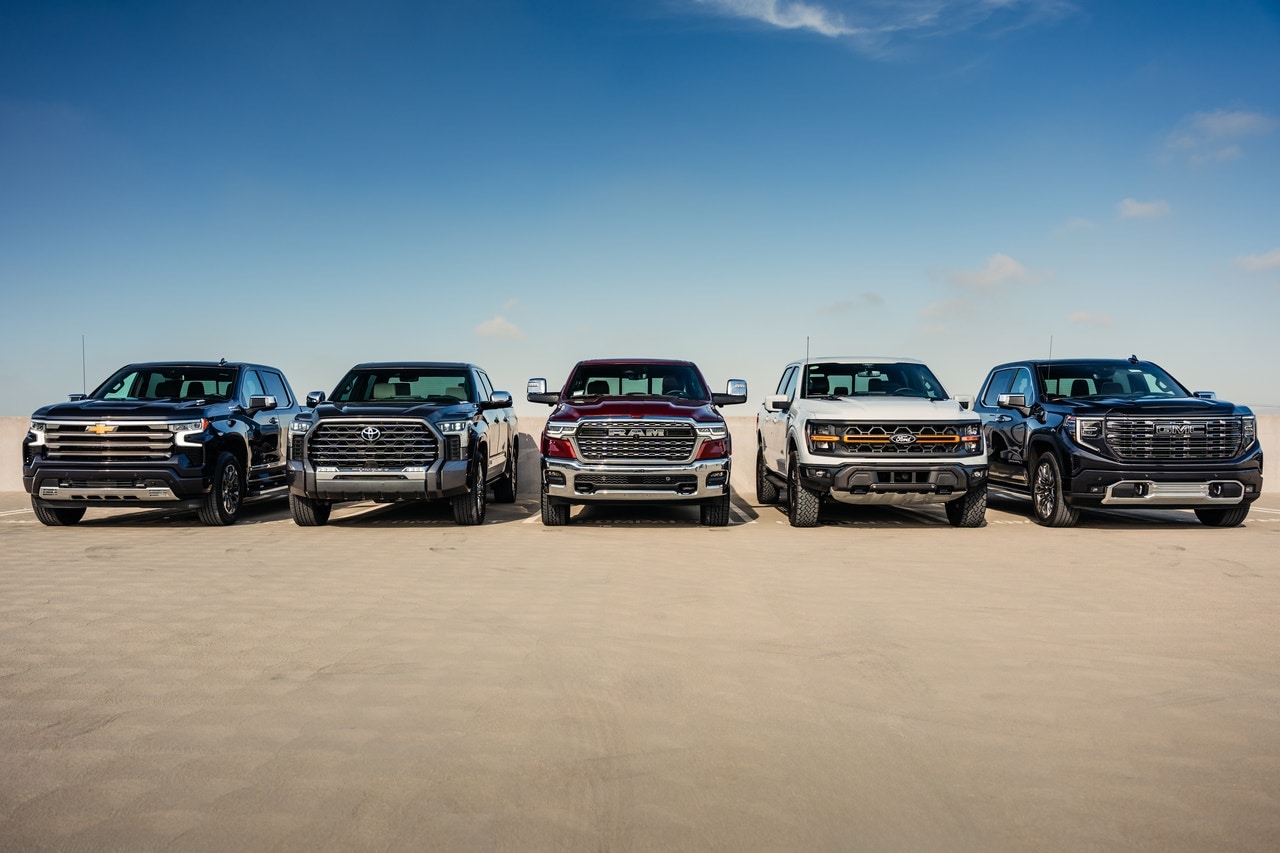


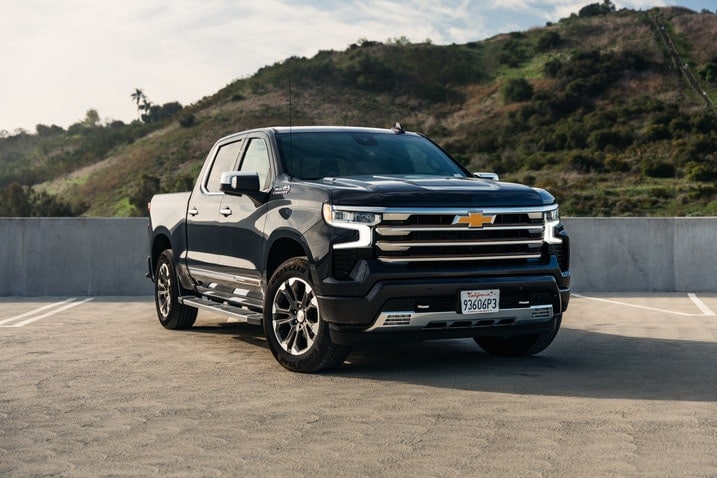
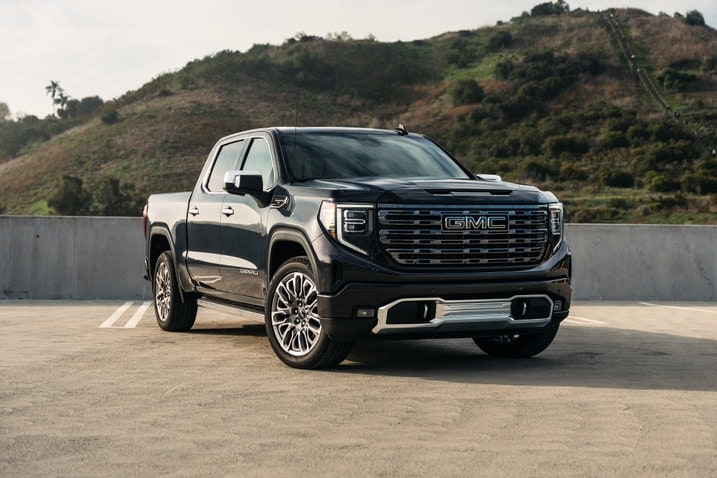
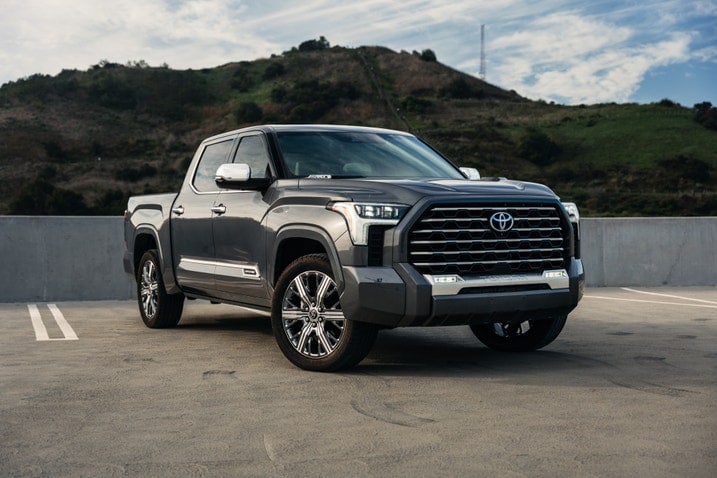
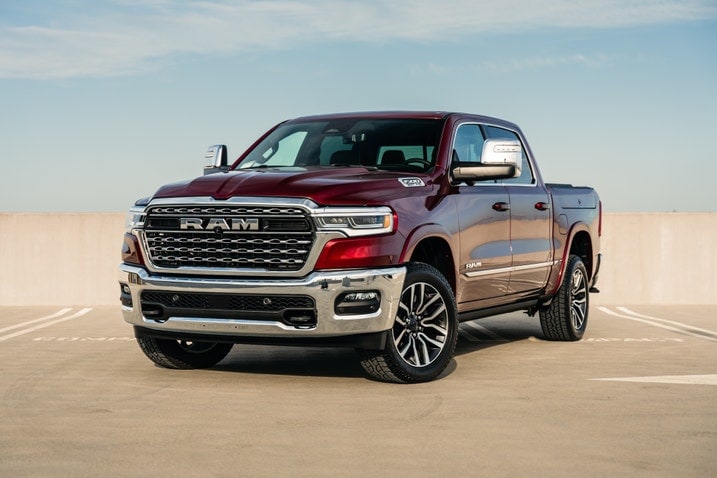

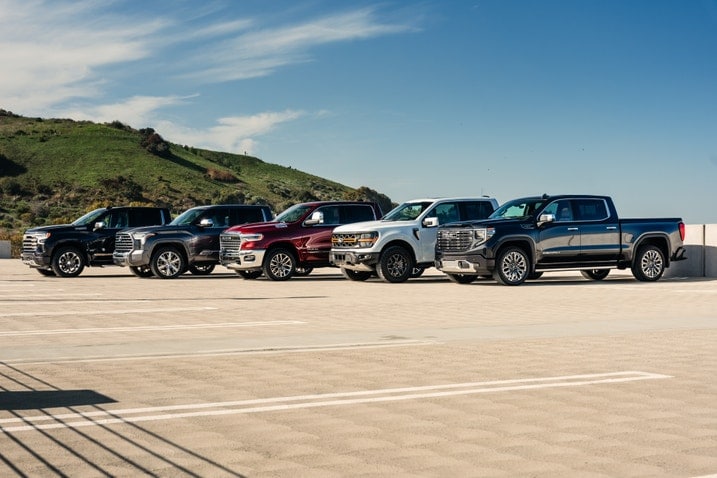
 by
by  edited by
edited by